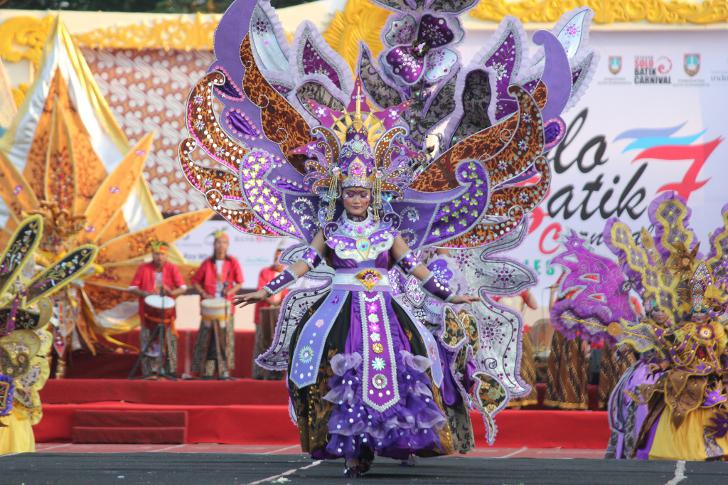Resist dyeing is one of the oldest methods of dyeing textiles with patterns. It involves the use of various methods to “resist”, or prevent the dye from reaching the cloth in certain places, thereby creating a pattern. One of the most common resist techniques involves applying melted wax to create a pattern before dipping the fabric in the dye.
Batik is an ancient wax-resist dyeing tradition that originated in Java, Indonesia. Indonesian batik pre-dates written records; some scholars believe it to have been brought to the archipelago from Sri Lanka or India, while others claim that it is a native tradition. There are three main batik techniques:
- Written batik (batik tulis) involves writing on the surface of the cloth using melted wax and a special pen-like tool called canting.
- Stamped batik (batik cap) uses melted wax and a stamp tool made of copper plates.
- Painted batik (batik lukis) is similar to written batik, but artists can use brushes and various other tools instead of the traditional canting.
Batik is an important part of Indonesian culture. There are numerous batik motifs and patterns, and each region of Indonesia has its own traditional batik. One of the most famous batiks in Indonesia is batik Solo that originated in Surakarta.
The Solo Batik Carnival is one of the biggest celebrations of batik in Indonesia and probably in the world. Despite its name, it has nothing to do with the traditional Christian pre-Lent celebration; the word “Carnival” was chosen because, just like Christian carnivals, the Solo Batik Carnival features a parade of dancers wearing extravagant costumes. The word “Solo” in its name is the colloquial nickname of Surakarta.
The inaugural Solo Batik Carnival was held on the main street of Surakarta in April 2008 to celebrate Indonesian heritage and showcase the ancient art and craft of batik. It was opened by Minister of Trade Mari Elka Pangestu. At the head of the procession was a group of 52 representatives of the Jember Fashion Carnival, followed by 247 other participants ranging from artists to mothers with children and university students, all wearing brightly colored batik costumes.
Since its inception, the Solo Batik Carnival has been held almost every year, except for 2020, when it was canceled due to the COVID-19 pandemic. Every year, the organizers announce a new theme in advance, and participants need to make sure that their costumes fit the theme. Another requirement is that at least 75% of the costume must be made from batik. Each participant funds their own costume; many of those who want to participate start saving money well in advance because costumes can be very expensive.
The carnival parade usually features around 400 performers, who walk along a 4-km route in downtown Surakarta, attracting tens of thousands of spectators. In addition to the parade, the festival includes performances by renowned Indonesian singers, a cultural fair, and other fun events and activities.

Photo: yosiadhimas23




